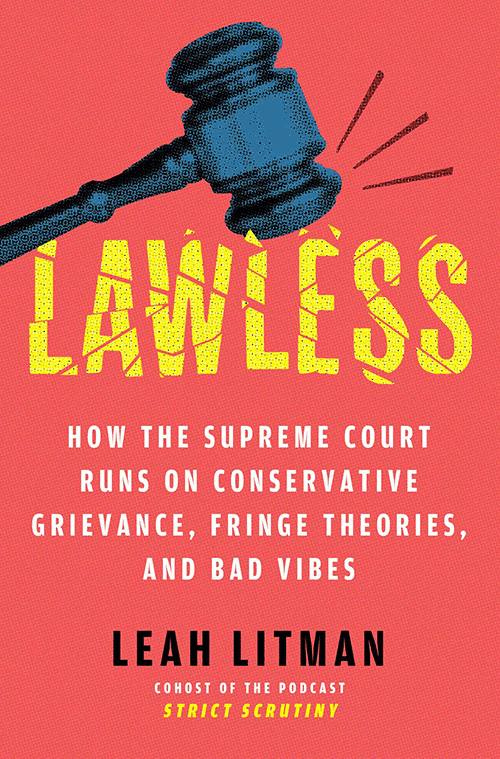When pondering the concept of lawlessness and the Supreme Court, you don’t usually think of the problem as coming from within the court. But that’s the message of a new book by Michigan Law Professor Leah Litman, ’10.

From her clerkship with former Justice Anthony Kennedy to her current teaching on constitutional law and the federal courts, Litman is well positioned as an observer of the Supreme Court and its activities of the past several years.
Her aim in writing the book, Lawless: How the Supreme Court Runs on Conservative Grievance, Fringe Theories, and Bad Vibes (Atria/One Signal Publishers, 2025), was to inform readers who are not immersed in the law about the workings of the Supreme Court at this particular point in its history.
Litman got the idea for the book from her experience co-hosting Strict Scrutiny, the award-winning podcast about the court.
“A lot of very smart people want to understand the Supreme Court better,” she said. “The book was designed to give them a resource that I hope will be accessible about how the court got to where it is and what I think is driving their decisions.”
The subtitle says it all
For insight into her thinking, look no further than the subtitle of her book: How the Supreme Court Runs on Conservative Grievance, Fringe Theories, and Bad Vibes.
Her “aha” moment for the book came a few seasons ago when she was reading a Supreme Court decision and decided that it was influenced by the justices’ own biases toward the issue.
“We often think of law as something that is objective and determinant, where there are right answers,” she said.
“Vibes, by contrast, are more subjective; they’re your innermost feelings. By suggesting the court is drawing on vibes rather than law, it’s meant to suggest that what they are doing is imparting more of their own views into the law that governs all of us.”
She added that “fringe theories” refers to the idea that the court is drawing on views held by a minority of the country, while “conservative grievance” is the idea that some of the justices appear to be convinced that conservatives are the victims of a society that doesn’t share their views.
“The justices zero in on different groups—be it men, religious and social conservatives, the megarich, corporate executives—and they describe those groups as the real victims in society,” Litman said. “But when we think about the powerful in society, those groups aren’t the obvious victims of discrimination today. I hope people appreciate how odd that is.”
For example, she offers what the court has said and done about campaign finance regulation, “where they basically suggested that laws that try to ensure everyone’s political spending is roughly equal are unfair to the megarich because they don’t allow the megarich to outspend everyone else. The idea that the megarich are the victims of a system that tries to make itself democratic should be striking to people.”
Humor helps
While Litman’s arguments are all very serious, her writing is far from dry, with humor woven throughout the book. The humor supplements the years of experience she brings to analyzing the court’s decisions.
And while the court’s approval ratings currently hover at historic lows, she said the problems she writes about have been around for a while.
She draws on earlier cases to underscore that argument.
“I was at the Supreme Court when not as many people were convinced that it was not functioning well,” said Litman, who clerked for Justice Kennedy from 2011 to 2012. “But a part of me thinks that’s because people misunderstood the court and weren’t paying enough attention to it. So a lot of the book tries to draw from earlier cases. I do think the situation has gotten worse, but I don’t know that it’s different in kind from how the Supreme Court has acted before.”
Litman concludes the book by noting the ebbs and flows in the court’s history, with shifts sometimes in response to public pressure and other times in response to political movements or changes in personnel.
“We have the court we have because there was a movement that fought for that court,” she said. “If you want to change the court, you need to develop a long-term strategy. That’s not something that’s going to happen overnight, but it is something that can happen if you educate yourself, stay organized, stay invested, vote, and do all of the things that are just part of being an informed citizen.”







